No products in the cart.
Table of Contents
Perhaps you’ve already noticed that there are many styles of bonsai art. That’s one reason why every tree is unique and striking in its appearance. Any bonsai artist follows certain styles in forming the tree. And it takes patience, dedication, and skill to train bonsai trees into your desired form.
If you’re new to bonsai art, you’re probably wondering what bonsai style to follow. Don’t worry, Plantly will discuss here the five basic styles of bonsai art that you could adopt. We’ll also give you tips on how to achieve those looks on your bonsai tree.
The 5 main bonsai styles
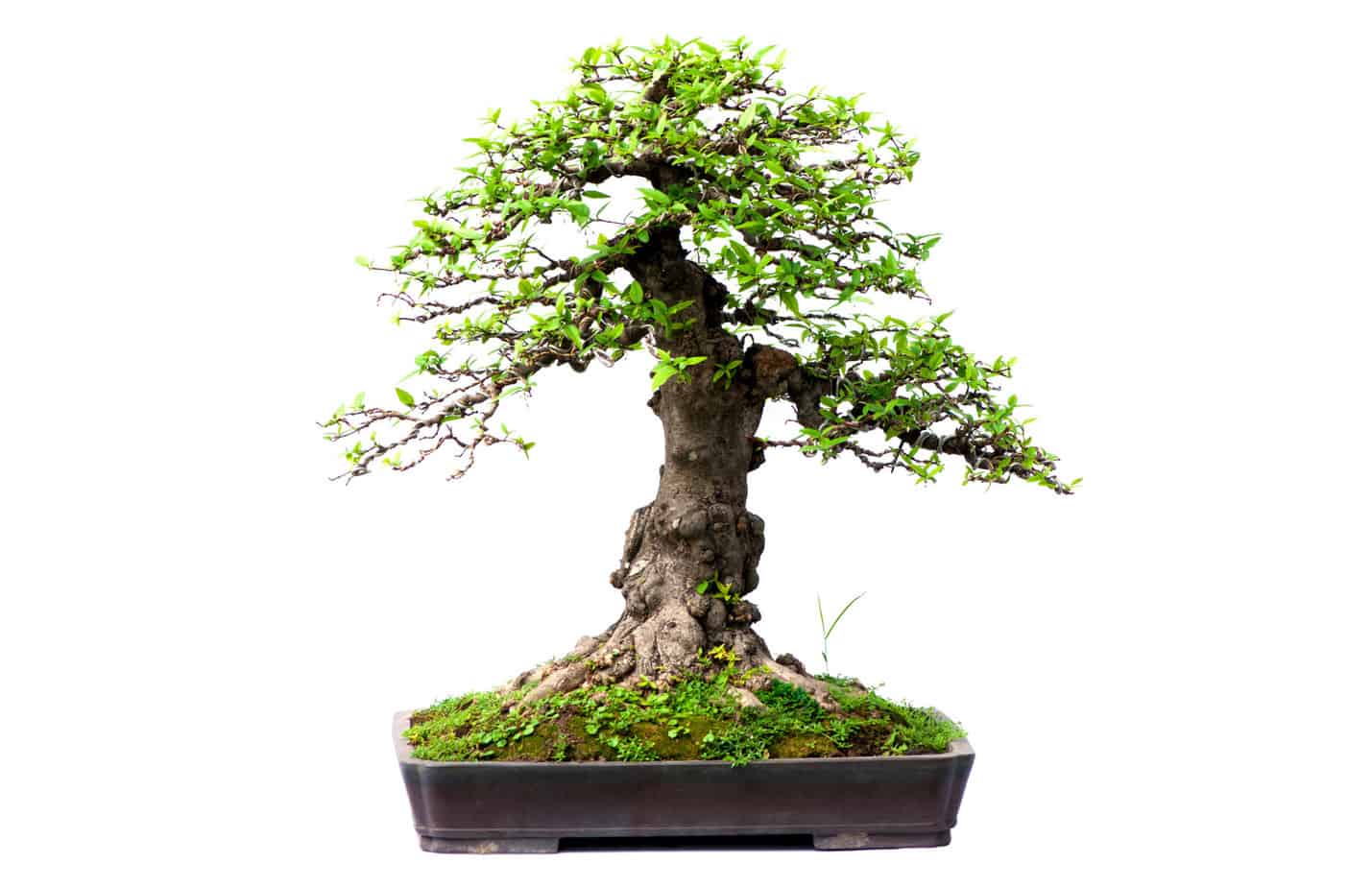
Formal Upright Style
Among all bonsai styles, the formal upright is the most common and basic. It simply follows the tree’s natural design in an upright-growing manner. It is also referred to as Chokan bonsai style.
The trunk style of Chokan bonsai is tapering, meaning the base is thick while the apex gets thinner. It has a perfectly straight trunk line. The branches are longer and wider at the lower portion while shorter at the upper portion of the tree.
The formal upright bonsai style is commonly observed in most trees growing in their natural habitat without much competition for light. This style is relatively easy to train and form.
Wiring and Pruning Techniques
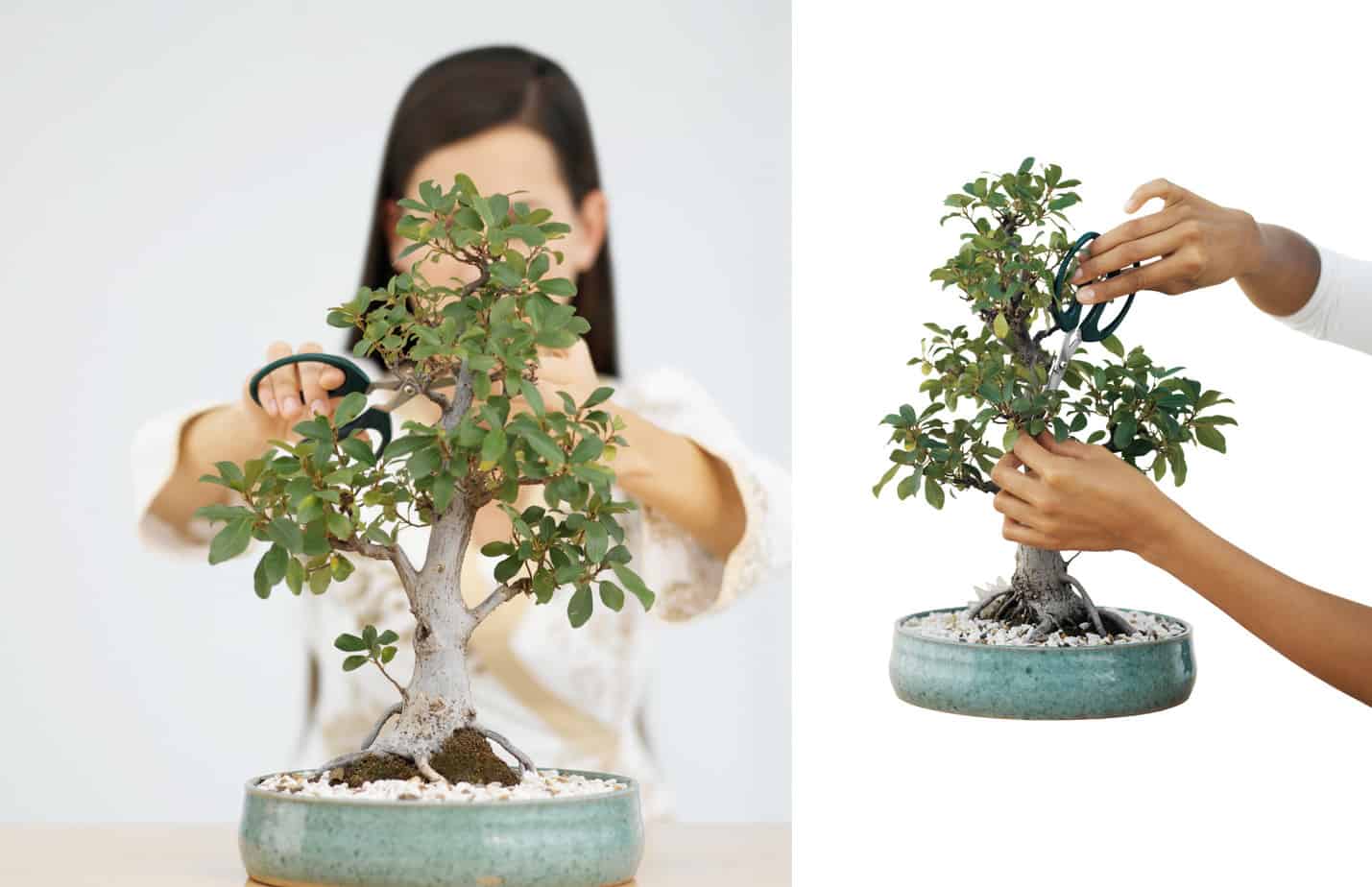
To create a formal upright bonsai tree, you must start with the root system. Your goal is to create an even distribution of the roots on all sides of the tree. Thus, if some roots are growing in the wrong direction, you should wire them.
Do the same with the tree trunk. Once the trunk starts forming an uneven shape, stick the wire at the base and wrap it up, holding it in its appropriate direction. This serves as the brace of the trunk. Leave it there for six months so the trunk will grow following the formal upright style.
Some trees will require longer training as they naturally have multiple bends that need to be straightened out. In this case, you’ve got to be extra patient.
Pruning is also important to create evenly distributed branches around the trunk. To create balance, each new branch should appear directly opposite the older branch. So, cut off any branch that appears out of proportion. Then, wire the branches so they grow perpendicular to the trunk.
Informal Upright Style

The informal upright style is also called Moyogi. This bonsai style is quite popular as it shows contortion of the trunk and sagging of branches. It’s as if the tree has gone through extreme weather conditions like storms, ice, and snow. The informal upright bonsai style mimics the natural appearance of a tree surviving the wild.
The distinct thing about an informal upright bonsai tree is the formation of an “S” shape. Its trunk has a tapering appearance, thick at the base, and gets thinner at the top.
Wiring and Pruning Techniques
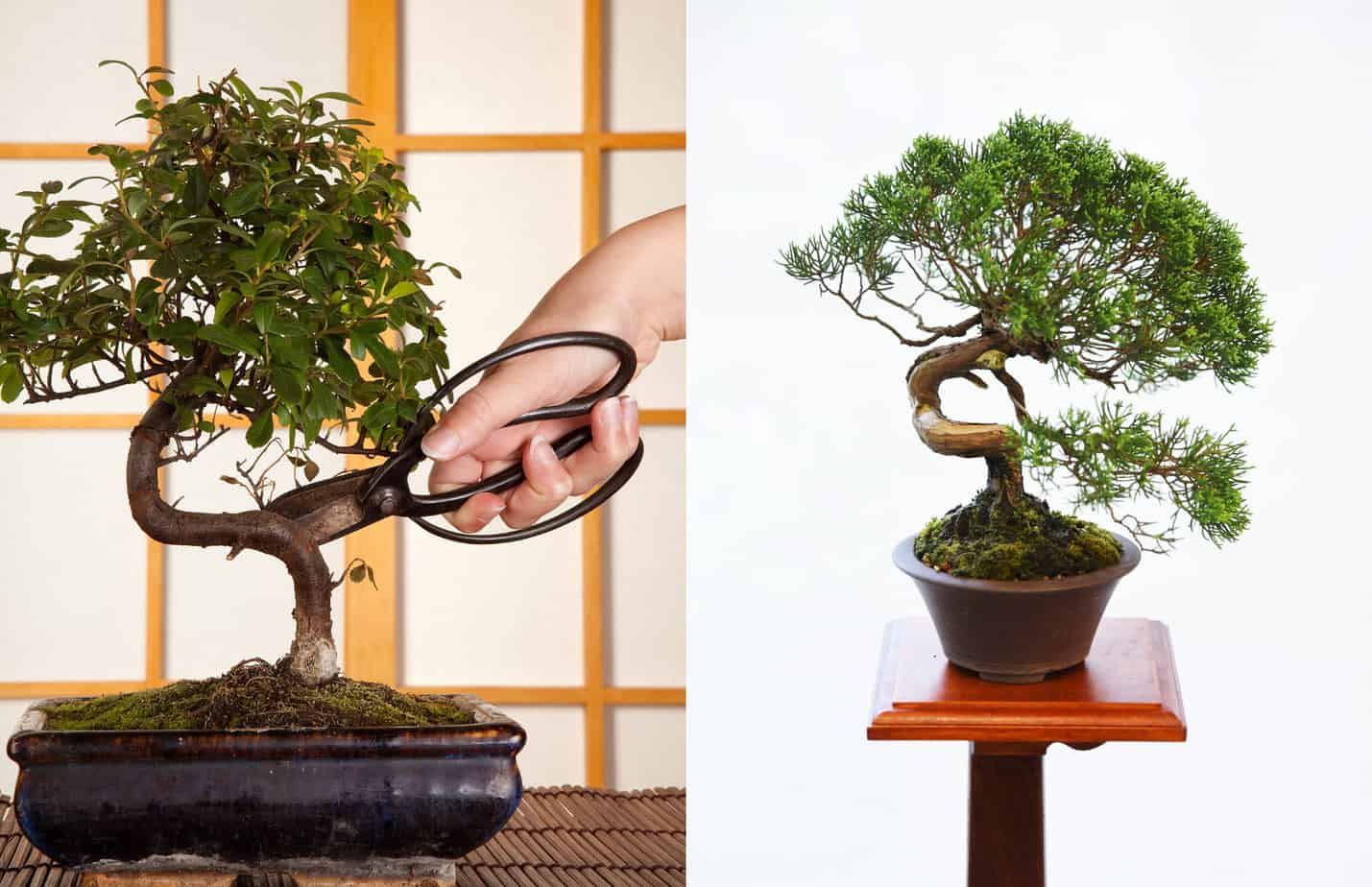
Start by potting the bonsai tree in a slightly angled manner. Manipulate the root system. Spread the roots directing the strongest ones opposite where the trunk leans. You can wire the roots to pull in the desired direction.
The next step is to wire the trunk. You have to move and direct the tree trunk to the desired position first. And from there, proceed with the wiring. This would help the three assume the bonsai style that you’re trying to achieve. Let the wire stay for about six months. This length of time should be enough to shape the tree.
Do regular pruning to direct the growth of the branches. Ideally, these branches should follow an alternating pattern, opposite each side of the trunk. The lower branches should be longer and the upper branches shorter.
Slanting Style
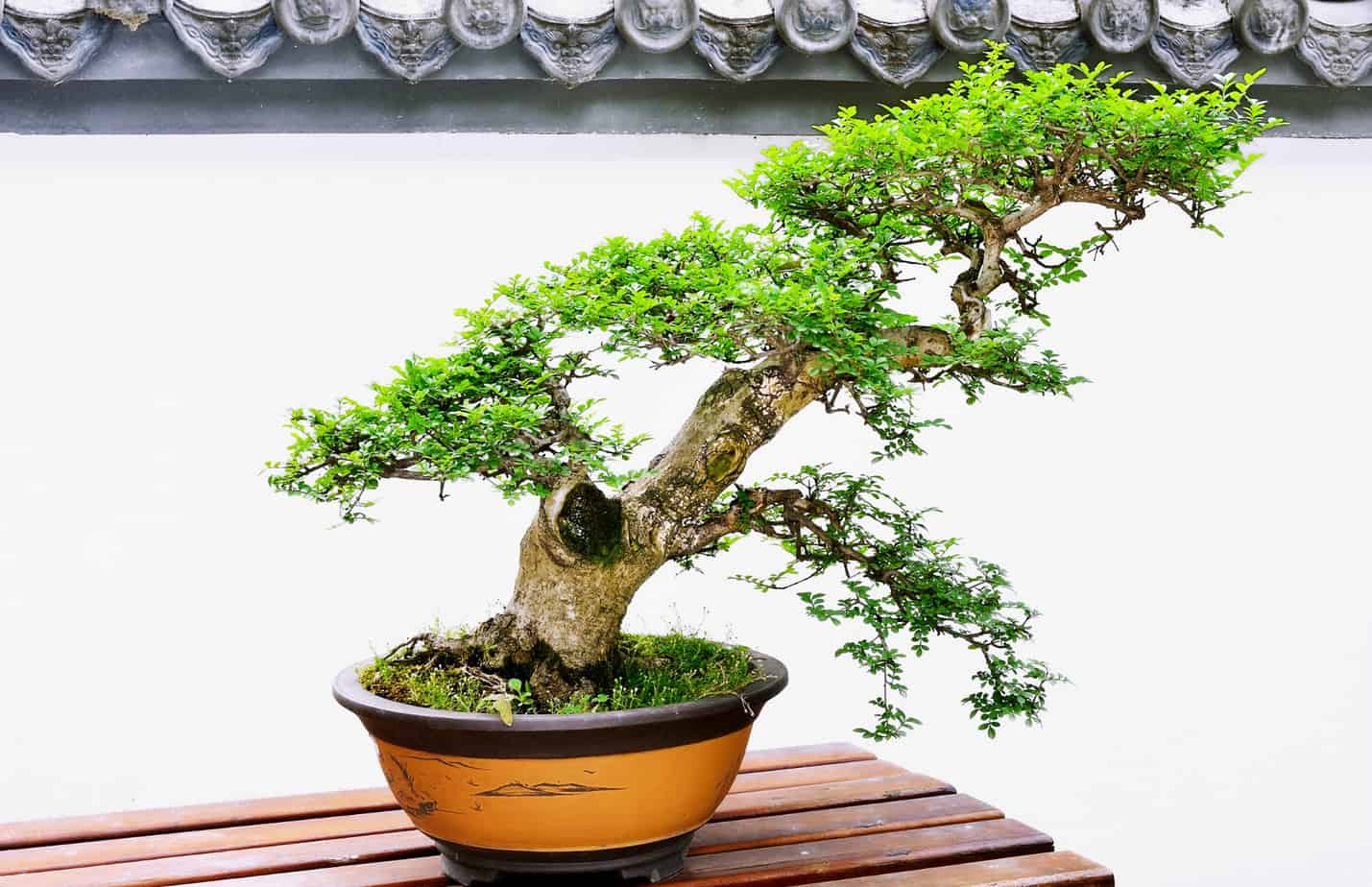
Some tree species in nature appear to have been swept by the wind. Years of resilience caused them to follow this form. When copied in bonsai art, this is known as the slanting bonsai style or the Shakan.
For the tree to remain balanced, it must develop a strong root system opposite the slanted trunk.
The tree’s slant must be about 60 to 80 degrees above the ground. The first branch of the slanting bonsai tree must be directed opposite where the trunk slants. So, when it’s leaning left, the first branch must be directed toward the right direction.
This creates balance achieving the shape of the windswept bonsai style.
Wiring and Pruning Techniques
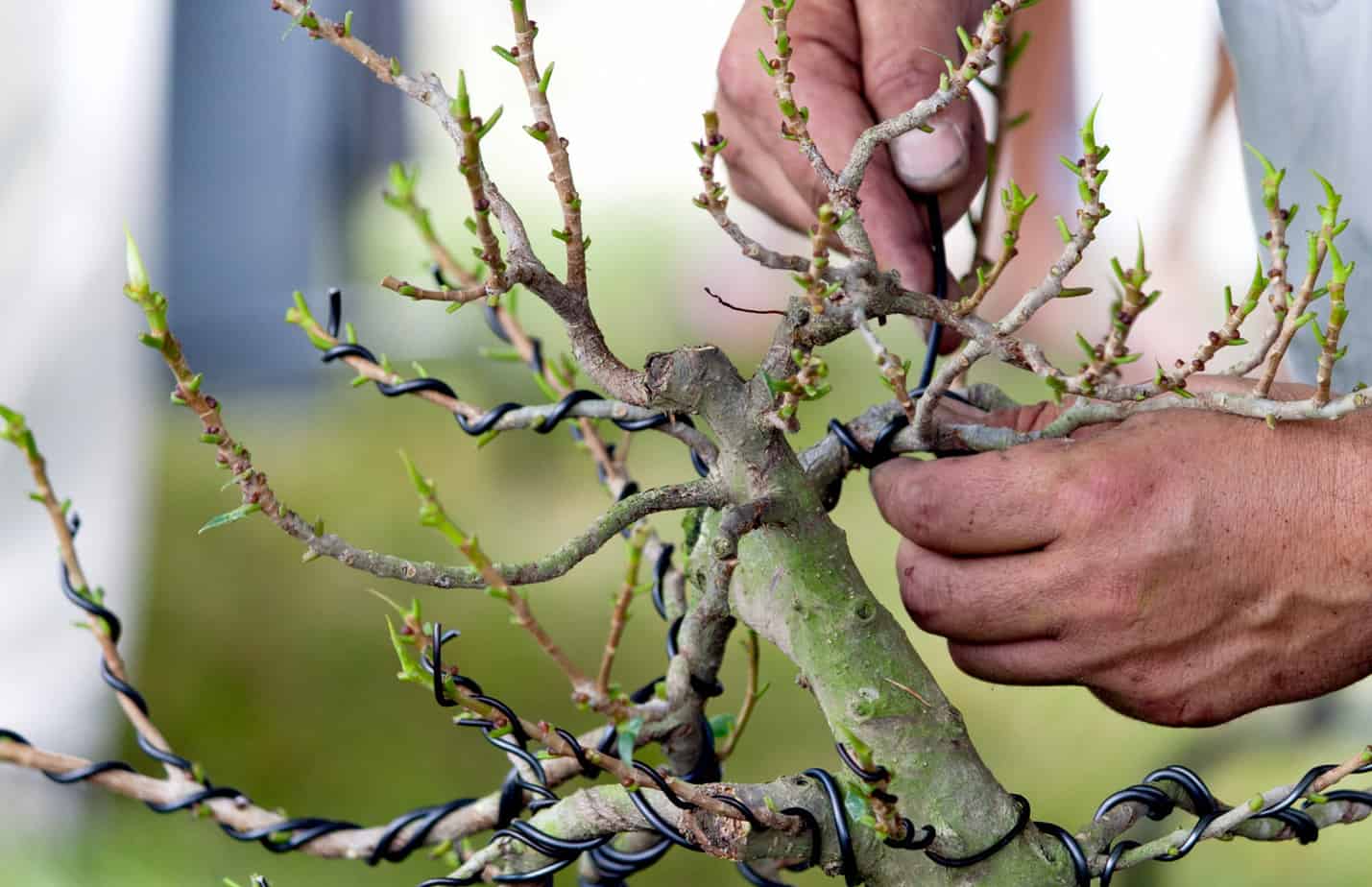
Choose a tree species that have either a formal or informal upright trunk. The trunk must lean either to the left or right. Start by wiring the roots. Remember that it must be opposite the direction of the tree’s slant.
This root system will develop into a strong root system while the roots on the side of the slanted trunk remain weak.
Wire the branches in such a way that they’re angled horizontally or downwards. You can prune branches that grow in an unwanted direction. This will help achieve the windswept style that you’re aiming for.
Semi-Cascade Style
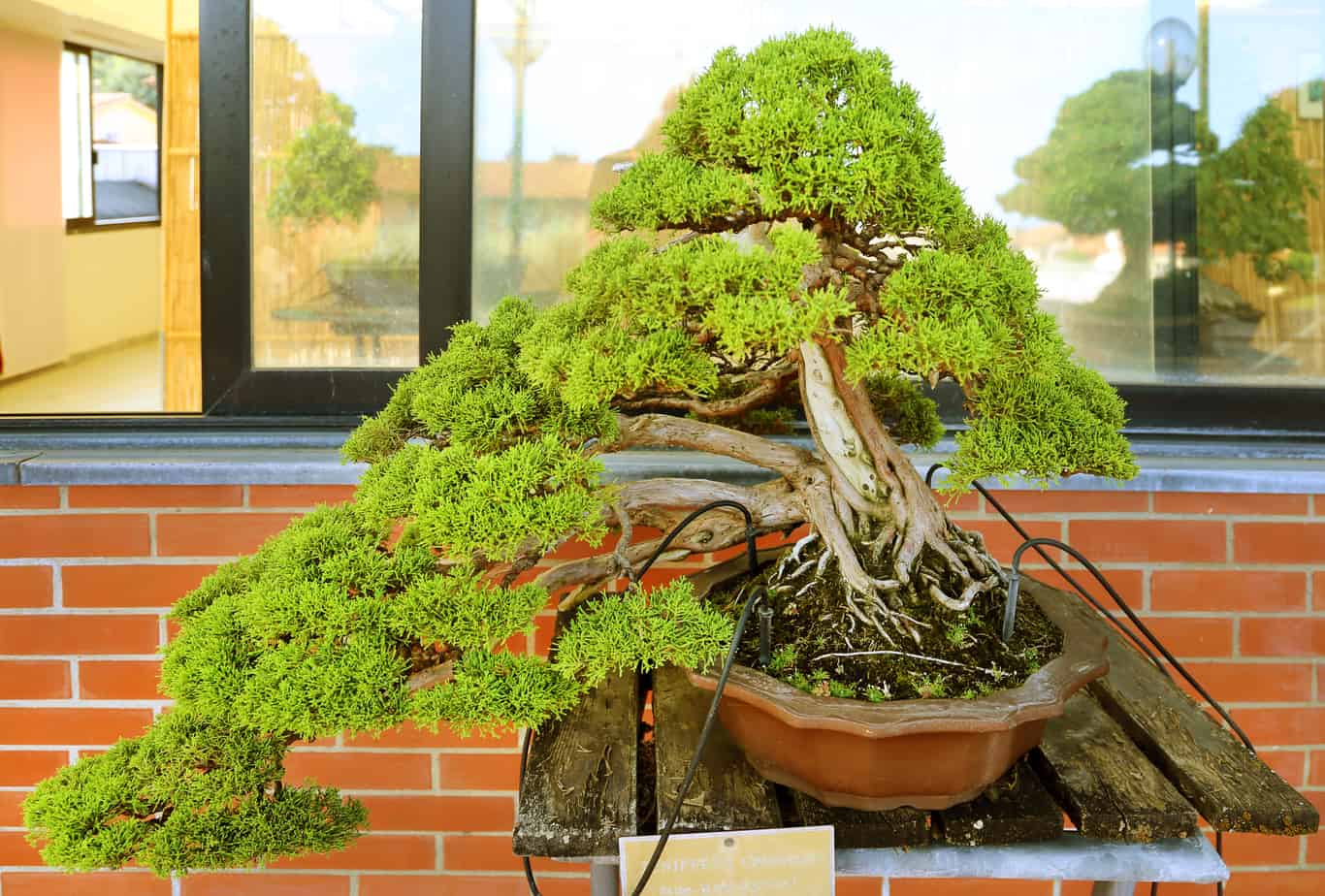
One amazing view you’ll see in nature is a tree hanging from the side of the cliff. You’ll notice that the trunk is bending downward. Many bonsai enthusiasts mimic this form. It’s called semi-cascade bonsai style or Han-Kengai.
Initially, the trunk will grow into a formal upright style, and then it will bend downwards. The reason why it’s called semi-cascade style is that the bending wouldn’t go further below the pot’s bottom.
Such semi-bending creates an appearance that’s unique but stunning.
Wiring and Pruning Techniques
To achieve such a look, you have to pot your bonsai tree in a deep container. Make sure it’s heavy so the growing tree won’t tip over. Plant the tree near the center of the bonsai pot.
As the tree grows, do extensive wiring on the tree trunk to form the desired bonsai shapes. The tree trunk must be in full view. Semi-cascade bonsai is meant to emphasize the trunk style. Thus, you have to prune the branches that are growing in front as well as those growing upright or inward.
Prune the roots as well, removing the thick and heavy ones. You are allowed to cut the entire root ball so the roots will fit the bonsai pot.
Full Cascade Style

If we have a semi-cascade style, we also have the full cascade style. This bonsai style is almost the same as that of semi-cascade. The only difference is that the bending falls below the base of the pot.
Such a bonsai style requires that you have a stand to put on so the cascade won’t touch the surface.
The first trunk growth must be straight or upright. Then, it will have to bend downwards. The branches should grow in a horizontal direction and an alternating pattern, left and right. When viewed on the side, the trunk style should follow an “S” pattern.
Wiring and Pruning Techniques
The techniques to achieve a full cascade style are almost the same as that of semi-cascade bonsai trees. You must use a deep and heavy pot as well. Wire the upright trunk to bend it to a cascading style. Allow the thin trunk to grow longer in a downward direction until it reaches below the pot.
Prune the branches so they grow alternately on each side of the trunk. The shape of the trunk must be visible to your view.
Bending the tree to achieve the desired trunk style will take time. Rewiring will be needed in the process.
Which bonsai style is right for you?

The degree of difficulty of manipulating a tree depends on which type of style you wish to adopt. You have to consider your skill level in bonsai art before you decide on which bonsai style to pursue.
The formal upright style and informal upright style suit well the skills of a beginner. Trees follow these natural styles in nature. Hence, manipulation would be easier.
It also matters what type of tree species you are using in the art. Some species are easy to bend and wired while others are hard and difficult to bend. We recommend choosing the ones that are more flexible for wiring.
How to care for your bonsai in the correct style?

Regardless of your preferred bonsai style, the care and maintenance of a bonsai tree are pretty much the same. Here are some general tips to remember.
Choose the right location
Some bonsai trees grow well indoors while others prefer to be outdoor plants. Make sure you know this information. This will help you find the best location for your bonsai. Remember that even if you’re very skilled in wiring the trees to achieve the shape, it’ll be useless if the tree is not grown in an ideal environment.
Provide enough water
Since bonsai trees are limited in their container, you have to make sure that they have enough water supply. Water the pot regularly. But make sure to do so according to the needs of the species. It’s very crucial that there are sufficient drainage holes in the container to avoid root rot.
Fertilize regularly
Just like with water, there’s a need to provide a regular supply of nutrients. Naturally, trees would require large amounts of nutrients but because they’re potted, their root system is limited. Hence, readily available nutrients would be of big help. Apply bonsai fertilizer during the growing season to augment the tree’s growth and development.
Repot as needed
To keep your bonsai tree healthy, make sure to repot it to new containers from time to time. Doing so will help replenish the soil and provide enough water and nutrients to the growing tree. It’ll also help prevent the tree from getting pot-bound and eventually, dying.
Examples of each style
Still undecided about which bonsai style to create on your tree? The following samples below might help you choose.
Chokan
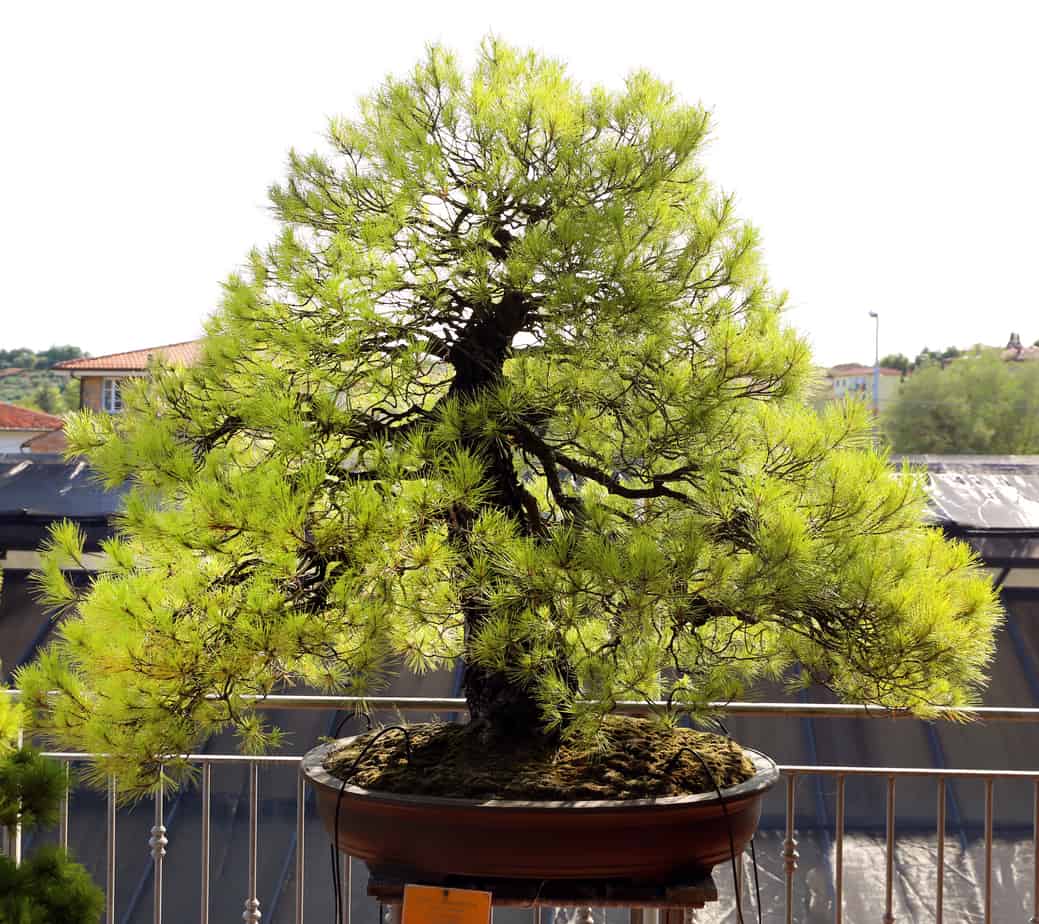
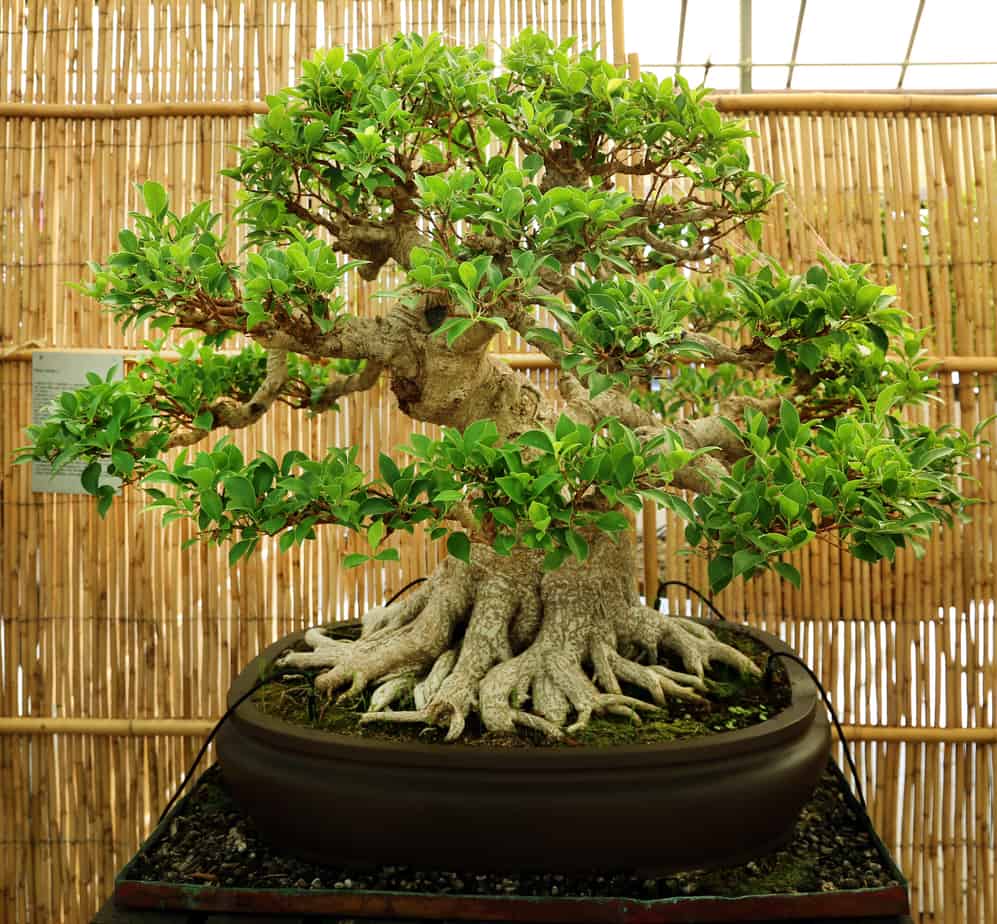
Slanting

Semi-cascade
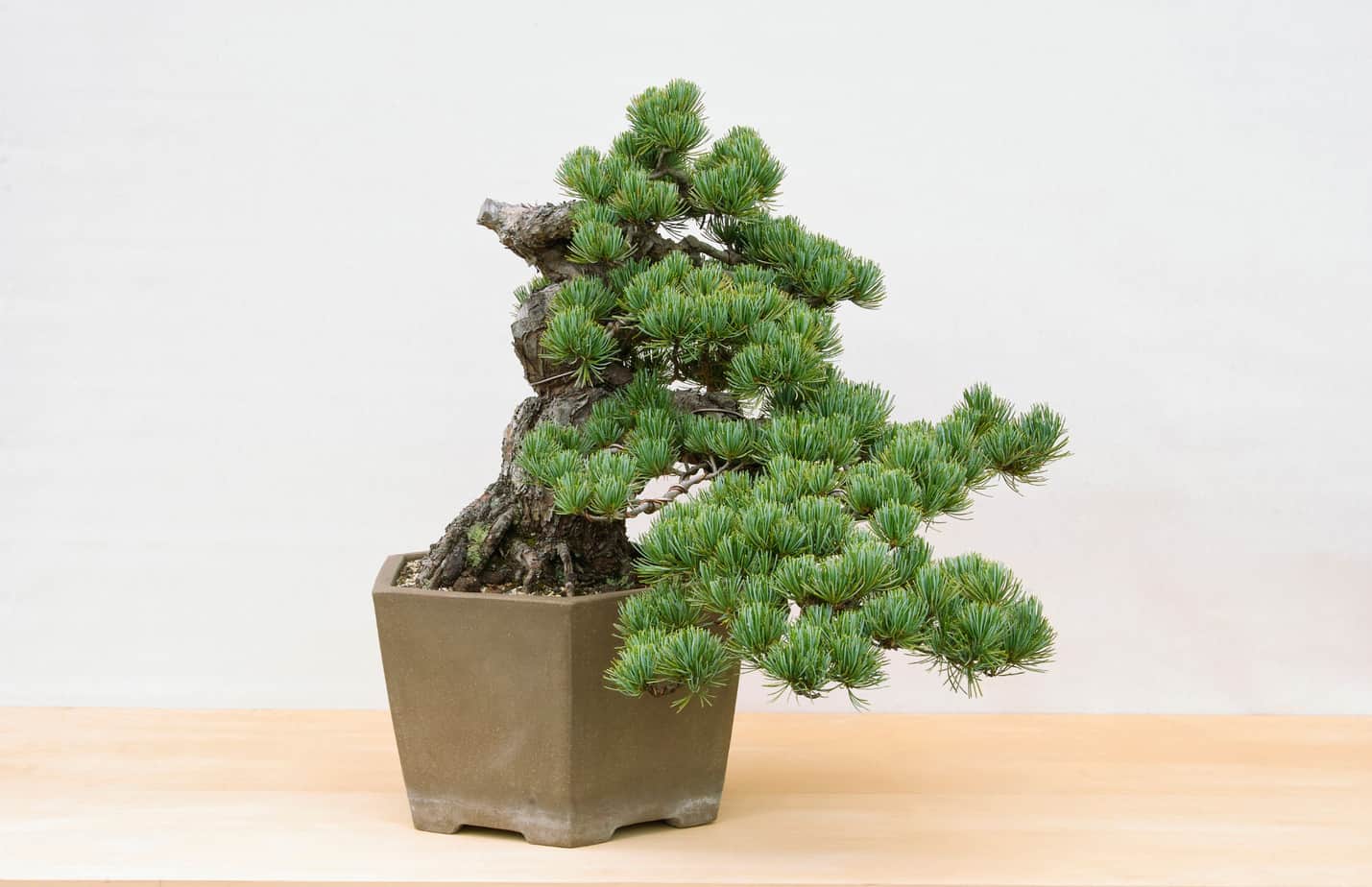
Full-cascade
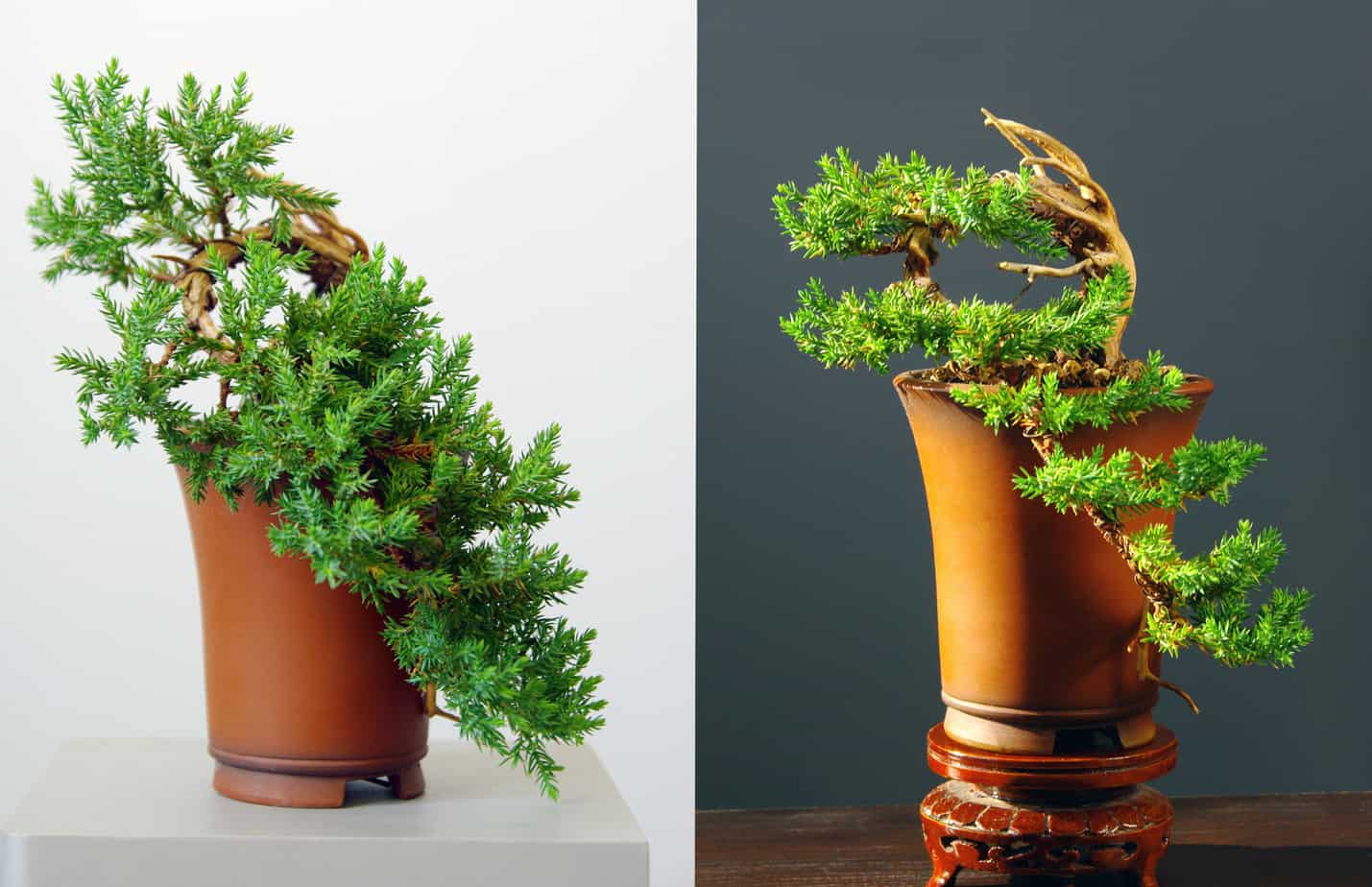
Bonsai accessories that can help you create the perfect look
Now, if you wish to add elements to your bonsai to make it appear more beautiful, there are some accessories that you can use. It may include decorative pebbles and stone, miniature figurines like animals, a pagoda, a house, and a bridge. You can choose anything depending on the design and theme that you want to pull off.
Whether you want to buy, sell or simply reach out to other plant enthusiasts, Plantly is the right place to be!


